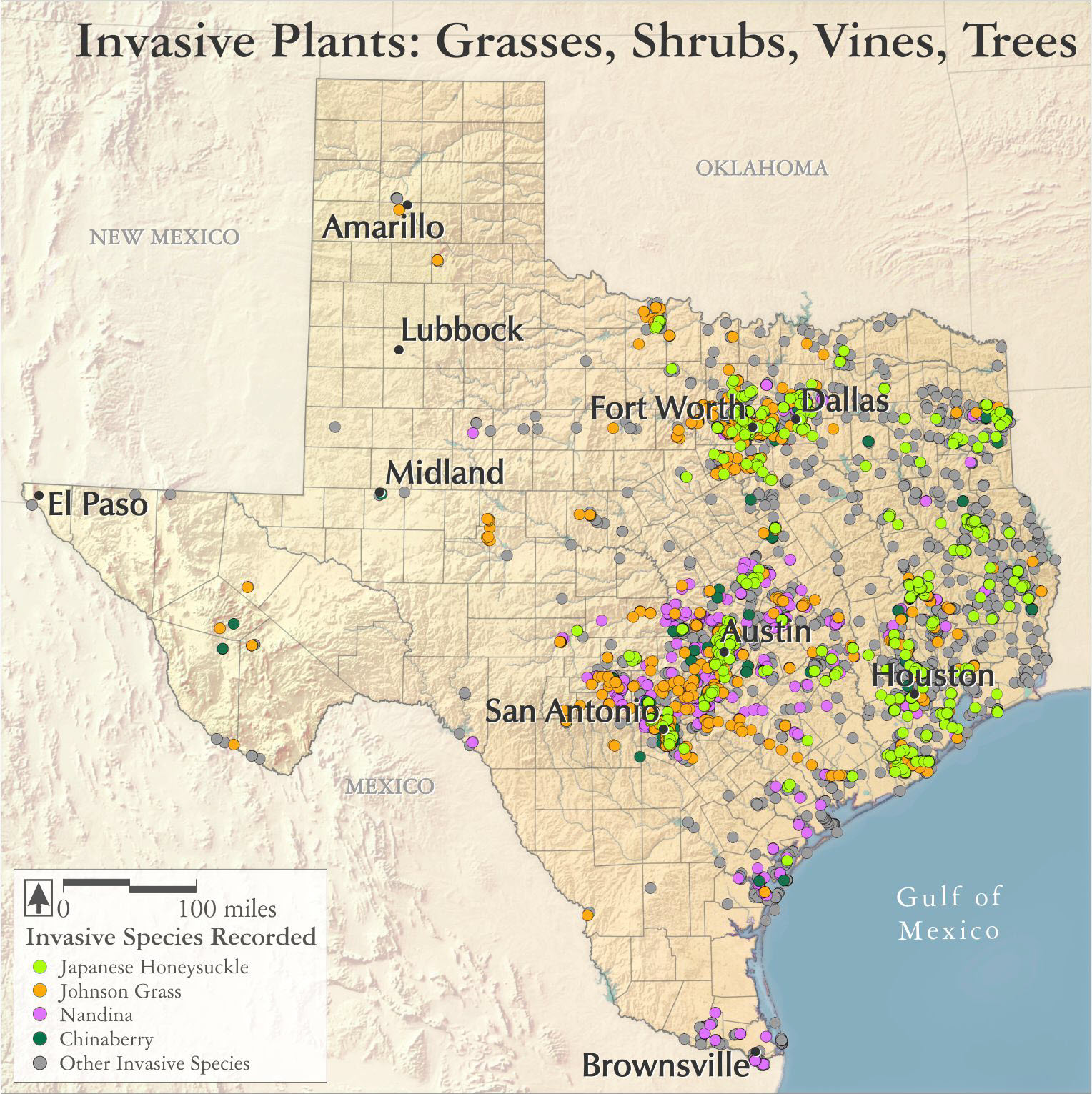Texas has many exotic invasive plants that have dramatically changed the state’s native landscape. From work led by the Lady Bird Johnson Wildflower Center, drawing on contributions from over 70 teams of citizen scientists, and supported by the National Biological Information Infrastructure, Texas Invasive Plant and Pest Council, Texas A&M Forest Service, Texas Parks & Wildlife, Texas State University, and the USDA Forest Service, some early and rough estimates of the impact can be found.The attached map features the most commonly noted invasive grass (Johnsongrass), shrub (nandina), vine (Japanese honeysuckle) and tree (chinaberry) in Texas. Johnsongrass (Sorghum halepense) is a perennial grass native to the eastern Mediterranean, and brought to the southeastern US in the early 1800s as forage. Nandina (Nandina domestica), native to eastern Asia, has been long used as an ornamental, and was first reported in the US in 1834. Japanese honeysuckle (Lonicera japonica), a perennial woody climbing vine originating in Japan, Korea and China, was brought to the US in 1806 as an ornamental and medicinal plant. Chinaberry (Melia azedarach) is a deciduous tree from the mahogany family, native to Asia and Australia, evidently introduced as an ornamental in the US in the 1700s.
Map source:
Texas Invasives. 2016. Invasives Database. http://texasinvasives.org/observations/search.php (Accessed 1 December 2016).
Selected reference:
CABI. 2016. Invasive Species Compendium. Wallingford, UK: CAB International. www.cabi.org/isc. (Accessed 1 December 2016).

